News
Interview with Christine Ten Eyck, FASLA
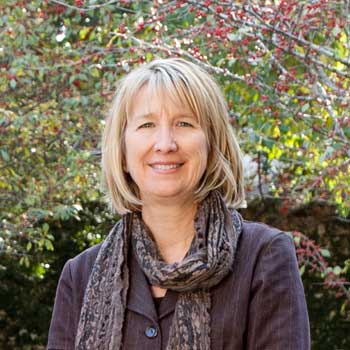 Christine Ten Eyck, FASLA / George Brainard
Christine Ten Eyck, FASLA / George Brainard
Texas seems to be just coming out of a severe four-year drought. What has the drought taught Texas about water management?
The drought has taught Texas they don't have enough water for all the people and for growing agriculture. Texas wants to attract more people and industry. But if you attract more people, you've got to have water. Texas's solution is to fund more infrastructure projects that bring water to the people -- the Texas Rainy Day Fund, which has $2 billion for water management projects. They will give low interest rate loans to towns or cities to bring water or improve their water supply.
By the way, I don't think we're over the drought, even though El Nino
has definitely hit.
As you just mentioned, Texas has passed this fund with $2 billion for water management. Is it enough? As a landscape architect, what does it mean for you?
No, I don't think it's enough.
I've always thought water is precious. In our projects, we make people aware of the path of water. We feel this is important anywhere, but especially in the arid Southwest where people long for a connection with water. Our projects have been a source of inspiration, not only for residential homeowners but also cities and college campuses. That's the role we play. We can make communities aware that water is a precious resource and that they need to take care of water, not waste it on lawns. Our projects have to be beautiful and sustainable.
I usually work on sites that have immediate concerns with either no water or in a year like this with flooding water rushing off existing transportation systems into these last little shreds of remaining nature, and so we try to improve these systems, just one project at a time.
Significant amounts of groundwater have been used during the drought. Landscape architects coming up with ways to recharge groundwater, even in urban areas. What will work in Texas? How can groundwater recharge be made more visible or even beautiful?
In Texas, if you own a property, you own the water rights to anything underneath your property. The rivers and streams are owned by the state of Texas. You have to get
special permits to use that water. But, basically, in Texas you can
still drill a well. There's not a ton of regulation.
On my own street in Austin, I know of five homeowners who have dug wells. They'll put signs out in their front yard that, "we're watering with well water, so we're okay. We can use as much water as much as we want." This is just bizarre to me. We've still got lots of people with great big lawns. Now that we're
getting all this rain they think it's perfectly okay to keep them. It's
just going to be a long, hard process.
In all of our projects, we try to slow water down and let it percolate down. I do this even in my own yard and garden. The whole front yard, which is good-sized, is designed to be a sponge to take it down. The more of these sponge gardens that get published, the more projects people see, it will help.
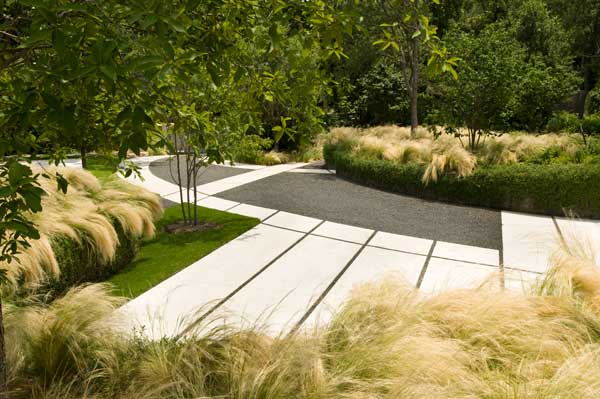 Sponge residential garden / Paul Hester
Sponge residential garden / Paul Hester
We're also trying to get people to appreciate the beauty of drought and appreciate brown. It's a gorgeous color. Golden colors. We just appreciate that there are seasons when things look a little haggard, just like me. It's just like part of life. We need to come up with a new kind of beauty that people can have -- a resilient, tough landscape that has a harsh beauty unique to its region.
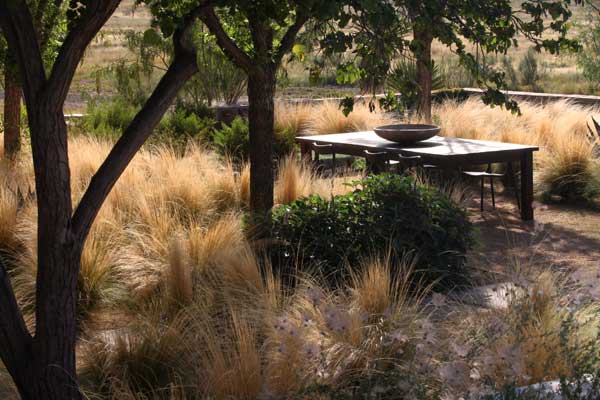 Brown is beautiful / Terry Moore
Brown is beautiful / Terry Moore
In a number of communities in Texas with severe water challenges, it came down to providing water for endangered species or humans. Where do you see the balance?
What can I say? People are having too many children. I hate to sound so rude, but there's too many people. We've got to be satisfied with one or two. Of course I'm the oldest of five, so I love a big family, don't get me wrong. It's just there are just so many people, and they use too many resources.
Balance between the wildlife and the humans? Seems like the government is going to probably pick humans. There needs to be a balance, but I couldn't begin to tell you how we're going to figure that out.
In your own projects, you're now even harvesting condensation from air conditioning systems. With your new project at the University of Texas at Austin Belo Center for New Media, you designed a fascinating system. Could you tell me how that works?
In Texas, we have humidity and also have tons of air conditioning. The air conditioning coils create this condensation, a byproduct of a building that typically goes into the sewer. Because of my experience in Arizona, I've learned to appreciate every drop of water and look for every little way to honor that memory of water in the landscape.
We made the whole Belo Center garden about the path of water. We were able to convince the Belo Center for New Media to harvest that the condensate along with the stormwater that hit the roof. The condensate and the stormwater go into these three cisterns for irrigation, but when those are full, a valve shuts, and the water then goes through our water fountain, a linear biofilter runnel, where we have native Juncus growing. It's a great element in the plaza, but it also tells an interesting story about reusing the water that a building produces.
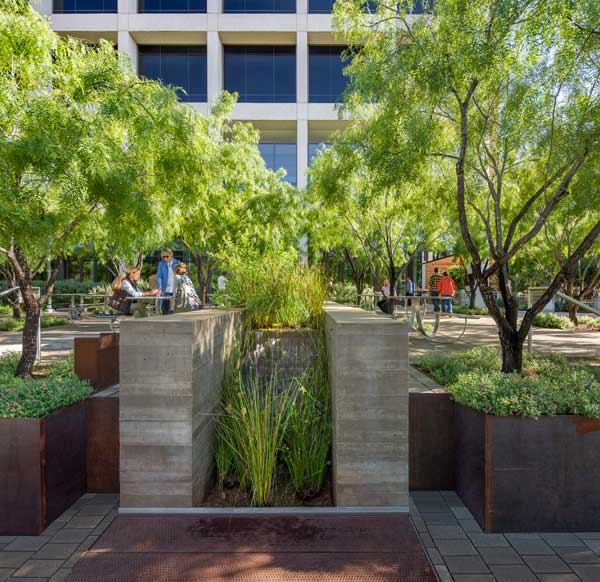 University of Texas at Austin Belo Center for New Media garden / Bill Timmerman
University of Texas at Austin Belo Center for New Media garden / Bill Timmerman
Now, water departments will tell you, "we could have used that water to dissolve the solvents and things in our sewer system and all that." So, again, is it really an end-all solution? No, it isn't. It's a way to use water that isn't processed by the city and it calls attention to forgotten water.
As you've described, your projects make water flow visible in the landscape. For example, your landscape at the University of Texas at El Paso campus has this series of vegetated arroyos or rivers. Why is making water visible so important?
Our project at UTEP, a campus that was defined by its architecture and abundance of asphalt, is set in basically a little mountain hillside in the Chihuahuan Desert. They had lost all connection with their fantastic place. The Chihuahuan Desert is a beautiful desert. It was more about really connecting the campus to their place, and creating a sense of pride of their unique spot in the world.
We looked at historic photos of the campus. When it was first built, there were many arroyos, but the campus evolved to become a car-centric campus, with acres of asphalt. We were lucky enough to peel all that off, reshape the land, and carve some of those arroyos back in, in order to slow that water down as it traverses through campus. When they do get rain, as little as they get, it comes in major, epic storms, so the new arroyos and acequias help to absorb and slow the water down.
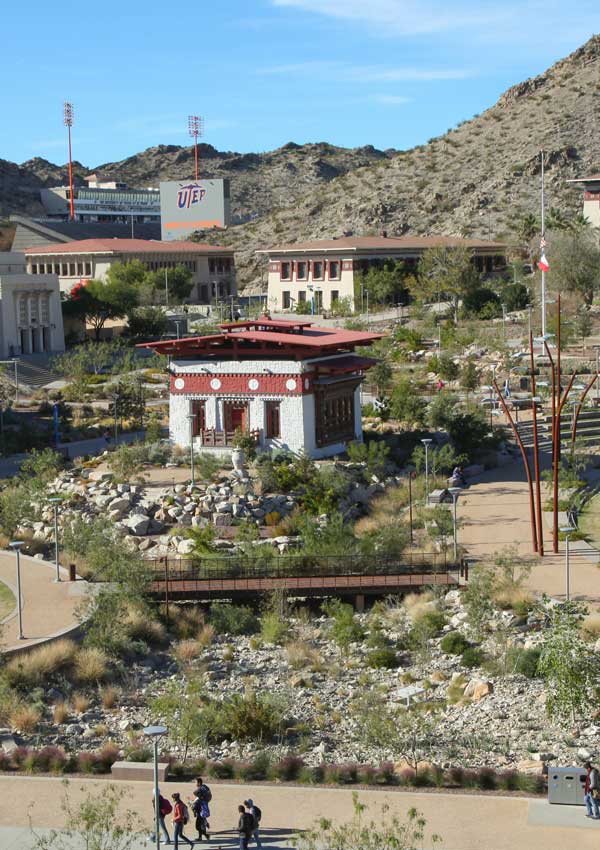 UTEP campus / Terry Moore
UTEP campus / Terry Moore
UTEP has the largest Hispanic student population of any university in the country. They're just the greatest kids. It was just a blast to give them a heart to their campus, embraced by these arroyos and this central gathering space. The new landscape just celebrates them. It celebrates where they're from, where their ancestors are from. We used all the native andesite rock from regrading and native Chihuahuan plants to create these arroyos and, now, you can't believe the birds and butterflies on this campus.
People's first impression of El Paso is typically the uninspiring view of industry as they drive I-10. Except for the mountain views, it's not flattering or reflective of this amazing city. We're showing the beauty of this place and hopefully instilling pride. It's had a great impact so far, so that's exciting. And it's all working.
Christine Ten Eyck, FASLA, is founder and principal of Ten Eyck Landscape Architects, Inc. Her firm of 12 has won numerous national ASLA awards.
Interview conducted by Jared Green at the ASLA 2015 Annual Meeting in Chicago.